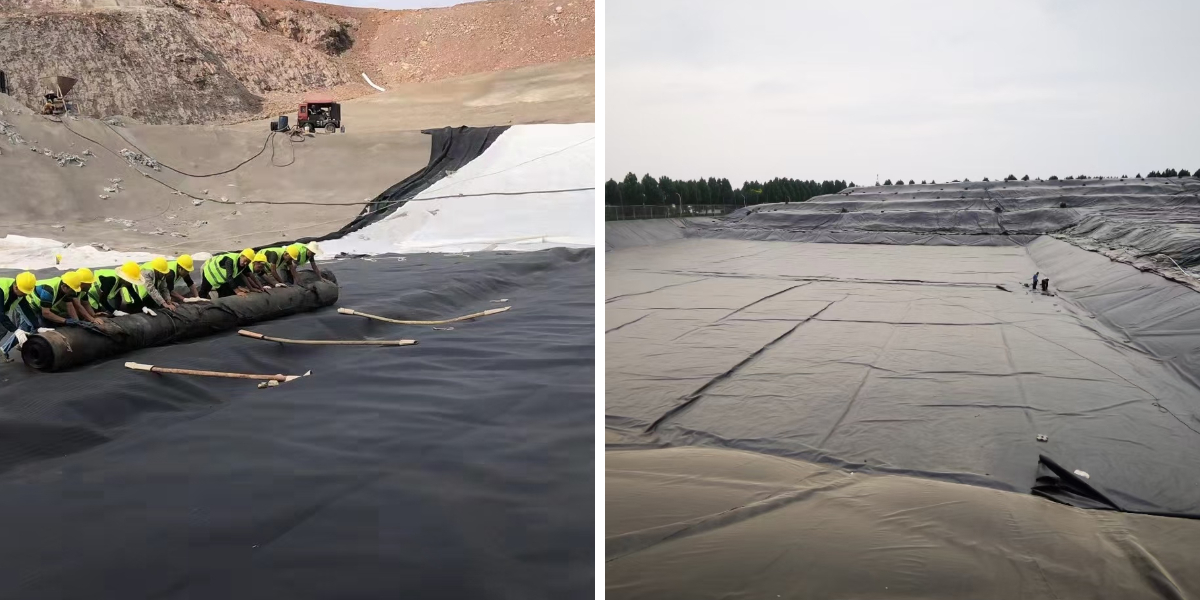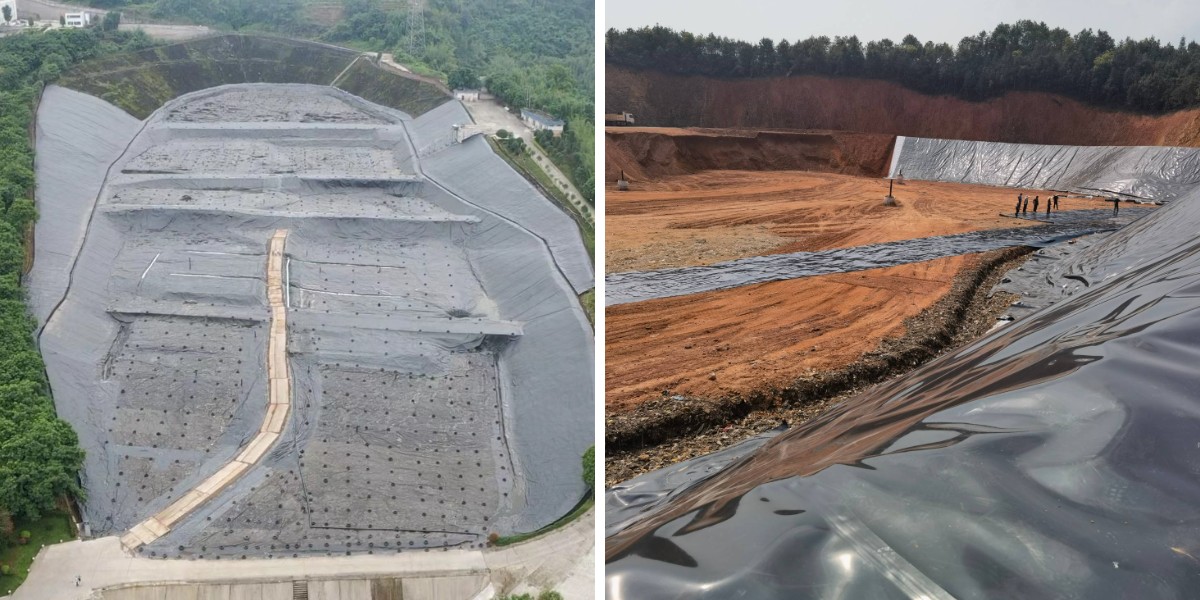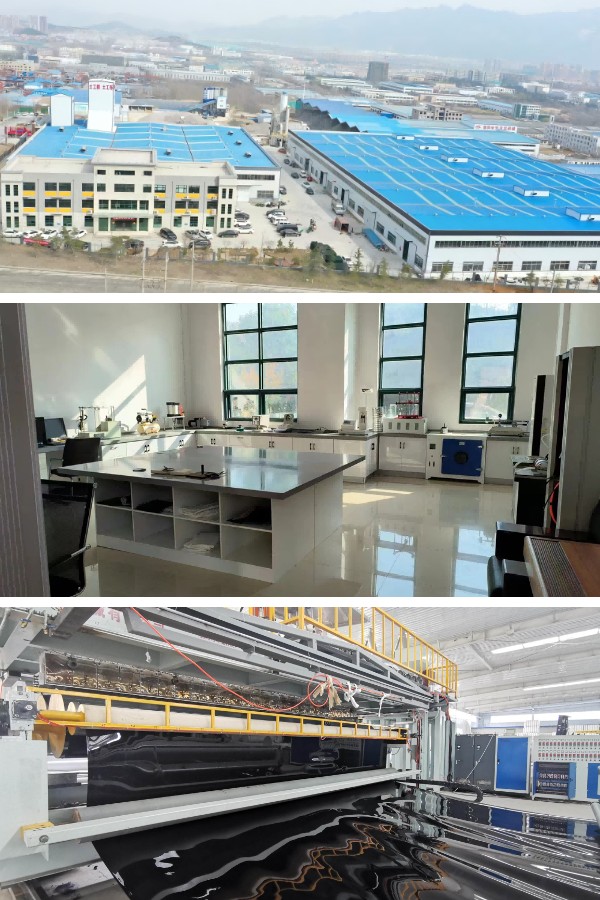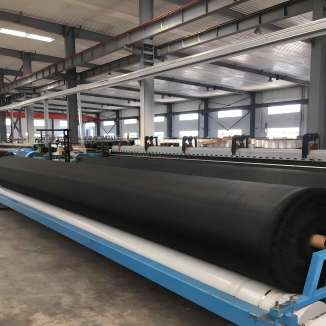What is an HDPE Geomembrane? A Complete Beginner’s Guide
In civil engineering, environmental protection, and construction, growing dependable boundaries towards fluid or gasoline migration is essential—and hdpe geomembrane stands out as a pinnacle preference for this task. Short for High-Density Polyethylene Geomembrane, this cloth combines durability, flexibility, and impermeability to clear up a large vary of containment challenges. Whether you’re new to geosynthetics or exploring options for a project, this information breaks down what hdpe geomembrane is, its key features, how it’s used, and why it’s a staple in current engineering. We’ll additionally dive into its function as an impermeable geomembrane and its relationship to easy geomembrane variants.
Defining HDPE Geomembrane: What It Is & How It’s Made
hdpe geomembrane is a synthetic, skinny sheet manufactured from high-density polyethylene—a thermoplastic polymer recognised for its energy and chemical resistance. The manufacturing manner entails extruding molten HDPE into non-stop sheets, which can be personalized in thickness (typically ranging from 0.5mm to 3mm) and width primarily based on assignment needs. What makes it an impermeable geomembrane is its dense molecular structure, which prevents the passage of liquids, gases, and contaminants.
One frequent variant is the clean geomembrane, a kind of hdpe geomembrane with a flat, even surface. While textured HDPE geomembranes exist (with raised patterns for more advantageous friction), easy geomembrane is desired for functions the place effortless installation, seamless welding, or a uniform barrier is critical. The clean floor approves for tight heat-sealed joints, making sure the whole membrane acts as a single, leak-proof system.
Key Features of HDPE Geomembrane
The reputation of hdpe geomembrane stems from its special set of homes that make it most appropriate to different containment materials. Here are its most extraordinary advantages:
1. Exceptional Impermeability
As an impermeable geomembrane, hdpe geomembrane has an extraordinarily low hydraulic conductivity—meaning it barely approves water or chemical substances to bypass through. This makes it perfect for tasks the place stopping leakage is non-negotiable, such as landfill liners, chemical storage ponds, or wastewater remedy facilities. The clean geomembrane variant, in particular, ensures constant impermeability throughout its complete surface, with no gaps from texture irregularities.
2. Durability & Resistance
HDPE geomembranes are constructed to last. They withstand UV radiation, severe temperatures (from freezing bloodless to severe heat), and chemical corrosion—even when uncovered to harsh materials like acids, alkalis, and solvents. Unlike herbal substances or thinner plastics, they’re abrasion-resistant and won’t tear without difficulty beneath foot visitors or mild tools use. This sturdiness interprets to many years of provider existence with minimal maintenance.
3. Flexibility & Easy Installation
Despite its strength, hdpe geomembrane is tremendously flexible, mainly in clean geomembrane form. It can conform to irregular terrain, curved surfaces, or moderate floor moves barring cracking or puncturing. Installation is straightforward: sheets are unrolled, aligned, and welded collectively the usage of warmth fusion (a procedure that melts the HDPE edges to create a everlasting bond). This technique is quicker than laying concrete or asphalt and requires fewer specialised tools.
4. Cost-Effectiveness
While the upfront price of hdpe geomembrane can also be greater than some alternatives, its lengthy lifespan and low upkeep desires make it most economical over time. It reduces the hazard of steeply-priced leaks or repairs, and its light-weight nature cuts transportation costs. For large-scale projects, the capacity to installation extensive clean geomembrane sheets additionally minimizes the variety of seams, decreasing labor time and conceivable vulnerable points.
How to Install HDPE Geomembrane
Proper set up is key to maximizing the overall performance of hdpe geomembrane. Here’s a step-by-step overview of the process, with a center of attention on clean geomembrane applications:
1. Site Preparation: Clear the location of debris, rocks, roots, and sharp objects that should puncture the membrane. Level the floor and compact the soil to create a secure base. For touchy tasks (like landfills), a defensive geotextile layer may additionally be laid first to add an more barrier towards punctures.
2. Unrolling & Alignment: Roll out the hdpe geomembrane sheets over the organized site, making sure they overlap by way of 6-12 inches alongside the edges. Align the sheets cautiously to keep away from wrinkles, as these can weaken seams. For clean geomembrane, use weights or sandbags to maintain the sheets in region at some point of alignment.
3. Seaming (Welding): Use a warmness fusion welder to bond the overlapping edges. There are two frequent methods: warm wedge welding (for thicker sheets) and extrusion welding (for developing strong, strengthened seams). After welding, check every seam the usage of a vacuum take a look at or air strain check to make certain no leaks—this is quintessential for preserving the membrane’s reputation as an impermeable geomembrane.
4. Anchoring: Secure the perimeter of the hdpe geomembrane the use of anchor trenches, concrete weights, or mechanical fasteners. This prevents the membrane from transferring due to wind, water pressure, or floor movement.
5. Final Inspection: Walk the whole membrane floor to take a look at for punctures, tears, or misaligned seams. Repair any problems right now the usage of patch kits designed for HDPE. Once inspected, the membrane is prepared for use.
Top Applications of HDPE Geomembrane
hdpe geomembrane is versatile ample to serve in various industries, thanks to its impermeability and durability. Here are its most frequent real-world uses:
1. Landfill & Waste Containment
Landfills count number on hdpe geomembrane as a most important liner to forestall leachate (toxic liquid from waste) from seeping into groundwater. The impermeable geomembrane acts as a barrier, directing leachate to series structures for treatment. Smooth geomembrane is favored right here for its convenient welding and regular performance, making sure no contaminants break out into the environment.
2. Water & Liquid Storage
It’s used to line reservoirs, irrigation ponds, ingesting water tanks, and wastewater lagoons. The hdpe geomembrane prevents water loss thru seepage and protects saved beverages from infection by using soil or chemicals. For agricultural projects, clean geomembrane is perfect due to the fact it creates a easy floor that’s effortless to easy and maintain.
3. Mining & Industrial Applications
In mining, hdpe geomembrane traces tailings ponds (where mining waste is stored) to include detrimental chemical substances and sediments. It’s additionally used in industrial settings for secondary containment round chemical tanks—acting as a backup barrier in case of leaks. Its chemical resistance makes it appropriate for even the most aggressive industrial environments.
4. Environmental Remediation
For cleansing up contaminated soil or groundwater, hdpe geomembrane is used to create “caps” over polluted sites, stopping rainwater from washing contaminants deeper into the ground. It additionally traces remediation ponds the place contaminated water is treated, making sure no pollution get away throughout the process.
Why Choose HDPE Geomembrane Over Other Options?
When in contrast to choice impermeable substances like PVC geomembranes, asphalt, or concrete, hdpe geomembrane provides clear advantages:
Superior Durability: It lasts longer than PVC and resists degradation higher than asphalt.
True Impermeability: Unlike concrete (which can crack over time), it continues a leak-proof barrier indefinitely.
Cost Efficiency: Lower protection and alternative expenses than most alternatives.
Environmental Friendliness: HDPE is recyclable, and its manufacturing has a decrease carbon footprint than concrete or asphalt.
Conclusion: The Go-To Impermeable Solution
HDPE geomembrane—especially in its clean geomembrane form—is an quintessential cloth for any undertaking requiring a reliable, long-lasting impermeable geomembrane. Its special combination of impermeability, durability, flexibility, and cost-effectiveness makes it the pinnacle preference for landfills, water storage, mining, and environmental remediation.
Whether you’re a civil engineer planning a massive infrastructure undertaking or a house owner wanting a pond liner, grasp hdpe geomembrane helps you make knowledgeable selections that prioritize overall performance and sustainability. By deciding on this versatile material, you’re investing in a barrier that will stand the take a look at of time—protecting each your task and the surroundings for a long time to come.
Contact Us
Company Name: Shandong Chuangwei New Materials Co., LTD
Contact Person :Jaden Sylvan
Contact Number :+86 19305485668
WhatsApp:+86 19305485668
Enterprise Email: cggeosynthetics@gmail.com
Enterprise Address: Entrepreneurship Park, Dayue District, Tai 'an City,
Shandong Province










